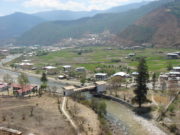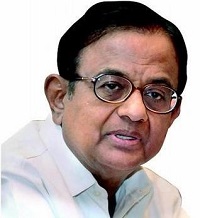The Central Statistics Organisation (CSO) is an honourable institution. Dr Pronab Sen, the former chief statistician, and Dr T C A Anant, the current chief statistician, are honourable men. Ordinarily, one should have faith in them. I do.
However, what should one do when they appear to contradict each other? Dr Anant, after releasing the data for the third quarter of 2016-17 (October-December), has concluded that the GDP in Q3 grew by 7 per cent and the growth rate for the whole year would be 7.1 per cent. Dr Sen, after reviewing the data, has concluded that the data is deficient and the growth rate for the whole year is likely to be revised downward to 6.5 per cent.
Whether the growth rate for the whole year turns out, finally, to be 6.5 per cent or 7 per cent, it would be a matter of satisfaction — not self-congratulation or exuberance — for the country. That, however, is not the question troubling informed observers. The question is ‘did demonetisation adversely impact economic growth?’. The CSO data did not answer that question.
Economy slowing down
The government had claimed at the beginning of 2016-17 that the growth rate would be 7.6 per cent. Suppose we assume that, after demonetisation, the growth rate will be 7 per cent. That is an adverse impact, and the cost of losing 0.6 per cent of GDP will be Rs 90,000 crore. If the growth rate falls to 6.5 per cent, the cost will be Rs 1,65,000 crore. Neither is a small sum of money. The argument that demonetisation did not — or will not — have a negative impact on the economy is hollow and puerile.
Between Dr Sen’s and Dr Anant’s, there is good reason to lean in favour of Dr Sen’s conclusion. After the changeover to the new methodology, the CSO publishes estimates of Gross Value Addition (GVA) and Gross Domestic Product (GDP). GVA is an estimate, GDP is derived by adding tax revenues and subtracting subsidies. Let’s look at the GVA growth rates during three years:
Demonetisation affected every sector of the economy except three: (1) it did not affect government expenditure and government actually increased its spending after November 8, 2016; (2) it did not affect the monsoon that was bountiful and boosted agricultural production; and (3) it did not affect the revenues of utilities because the demonetised notes were allowed to be used for paying utility bills and actually encouraged payment of old arrears. Let’s, therefore, look at the GVA growth rates after excluding government, agriculture and utilities:
The conclusion from either table is simple and clear: economic growth in the non-government, non-agricultural economy slowed down since Q4 of 2015-16 and was on a decline in 2016-17. Demonetisation that happened in the middle of Q3 accelerated the decline.
Relevant numbers
Adding tax revenues to GVA and subtracting subsidies to arrive at GDP does not reflect higher growth. If excise duties are raised in the course of a fiscal year, as was done by the government, it will bring in more revenues, but not higher growth. If subsidies are compressed, it does not mean higher growth.
Growth is best captured by numbers reflecting greater investment, higher production and more jobs. While the GVA/GDP data may have sprung a surprise, many other indicators point to an economy that is not investing more, not producing more and not creating more jobs. Compare the GVA growth numbers in Q3 of 2015-16 and Q3 of 2016-17. In the Mining, Manufacturing, Construction, Trade/ Hotel/ Transport/ Communication and Financial Services sectors, the GVA growth number has declined sharply in 2016-17.
In Q3 of 2016-17, the Index of Industrial Production (IIP) recorded a meagre growth of 0.2 per cent. Bank credit growth to industry was negative at (-) 4.3 per cent. The ratio of Fixed Investment to GDP has declined from 29.3 per cent to 26 per cent. By September 2016, net fixed assets of all firms had declined by (-) 9.36 per cent. The average plant load factor of all thermal power plants is at 60 per cent. Yet, it is claimed that demonetisation has not affected economic growth!
Just as the GVA growth numbers for Q1 and Q2 of 2016-17 were revised downward, it is likely that the GVA growth number for Q3 of 2016-17 will also be revised downward. When data for the informal sector is also captured, the GVA growth number will be moderated and will be lower.
Unanswered questions
If the government is confident that demonetisation has not affected economic growth, why is the government not publishing the data on the outcome of demonetisation? Why have the restrictions on withdrawing our money not been lifted yet? Why is the RBI still counting the old notes in the old-fashioned way? How much of the old notes has returned to the system?
Which objectives of demonetisation have been achieved? Black money continues to be generated. Bribes are being given and taken. Terrorist incidents have increased in Jammu & Kashmir. Fake currency has made its appearance.
There are a number of questions about the GVA/GDP number. That number is not the answer to our questions about demonetisation.
[Writer former Finance Minister of India]


























































